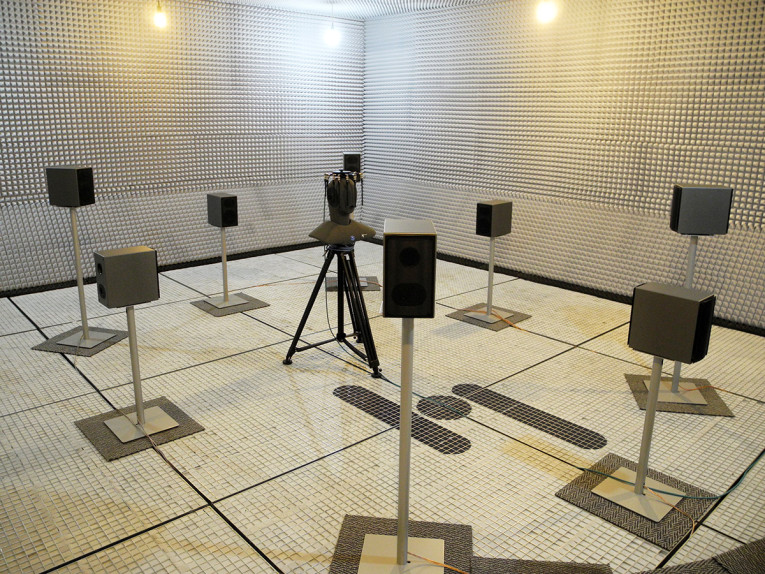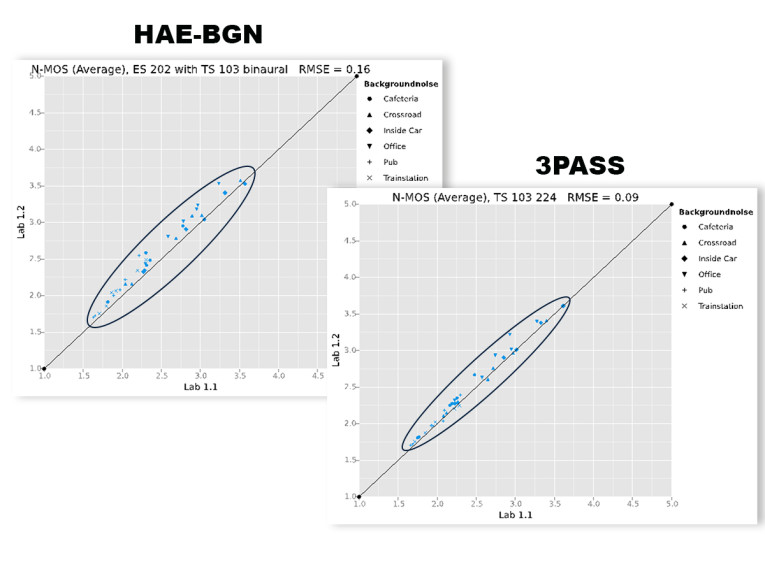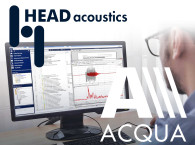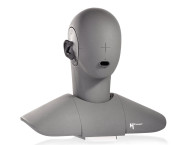
For over a decade, HEAD acoustics has offered a standardized solution for measuring the speech quality performance in the presence of background noise (BGN). That BGN system, compliant with ETSI ES 202 396-1, relied on equalizing the sound field using a binaural setup and gave a great level and frequency reproduction of a measured noise field. In the last few years, HEAD acoustics has been pioneering a new BGN system, 3PASS (3-dimensional Playback of Acoustic Sound Scenarios), which takes multi-microphone arrangements in modern consumer electronics devices into account. The 3PASS system was approved as ETSI standard TS 103 224 in August 2014.
The new 3PASS system offers true spatial reproduction of the recording, combined with accurate level and frequency reproduction to provide fast and more consistent equalization. Four independent labs, tested 7 different devices in 6 different background noise scenarios, and compared their measurements between the older BGN system and the new 3PASS. In all cases, the measurements saw improvements using the new 3PASS system. The system is now approved as the recommended simulation method for hands-free measurements in the presence of background noise in 3GPP standard TS 26.132, version 13.2.0, Release 13. The test methods specified in this 3GPP standard can be used to assess the minimum requirements for the acoustic characteristics of speech and video telephony terminals.
“In 2005, the first close to reality background noise simulation system based on a four-channel loudspeaker reproduction of binaurally recorded signals was developed by HEAD acoustics and standardized in ETSI ES 202 396-1. Meanwhile, this method can be found in all test labs around the world – but it no longer meets the requirements on accurate sound field reproduction, which are required for the evaluation of up-to-date noise reduction technologies,” says Hans W. Gierlich, Managing Director Telecom at HEAD acoustics. “Therefore, with 3PASS, HEAD acoustics has developed a completely new simulation method. 3PASS is an eight-channel system and is characterized by a highly accurate spectral and spatial reproduction of the sound field around the device under test as well as excellent inter-laboratory reproducibility.”

3PASS is capable of preserving and reproducing the essential spatial characteristics of real-life background noise scenarios in different test rooms. Its key application field is the voice and quality analysis of telecommunication devices in the presence of background noise. Due to its three-dimensional approach it is especially suited for the evaluation of complex noise reduction algorithms, e.g. as often found in modern smartphones with multi-microphone arrangements. A noise database, as specified by the new ETSI standard TS 103 224 is included and is ready for use with 3PASS. This noise database can be used for three use cases: telephone terminal at ear, handheld hands-free terminal (HHHF) at typical user position and desktop hands-free terminal at typical user position. 3PASS is a software for Windows, which is used in conjunction with the front end labBGN (playback) as well as the microphone surround array MSA I (recordings), and the HEAD measurement system HMS II.3.
After automatic recognition of the connected hardware, all parameters are set via the software. All settings and subsequently created filters can be saved. Via USB, all settings, filters and sound files are transferred to the front end. The equalization is conducted automatically via labBGN and MSA I. The complete solution is now available.

HEAD acoustics was founded in 1986 and has been involved in noise and vibration, electroacoustic and voice quality testing since its inception. HEAD acoustics is based in Herzogenrath, Germany, with affiliates in USA, Japan, France and Great Britain. The Telecom Division of HEAD acoustics manufactures telecom test equipment and provides consulting services in the field of speech and audio quality. Moreover, HEAD acoustics closely co-operates with DECT Forum, ETSI, ITU-T, 3GPPP, TIA CTIA, GSMA and other standardization bodies with regard to the development of quality standards for voice transmission and speech communication. In many partnership projects, HEAD acoustics has proven its competence and capabilities in conducting tests and optimizing communication products with respect to speech and audio quality under end-to-end as well as mouth-to-ear scenarios.
www.head-acoustics.de






